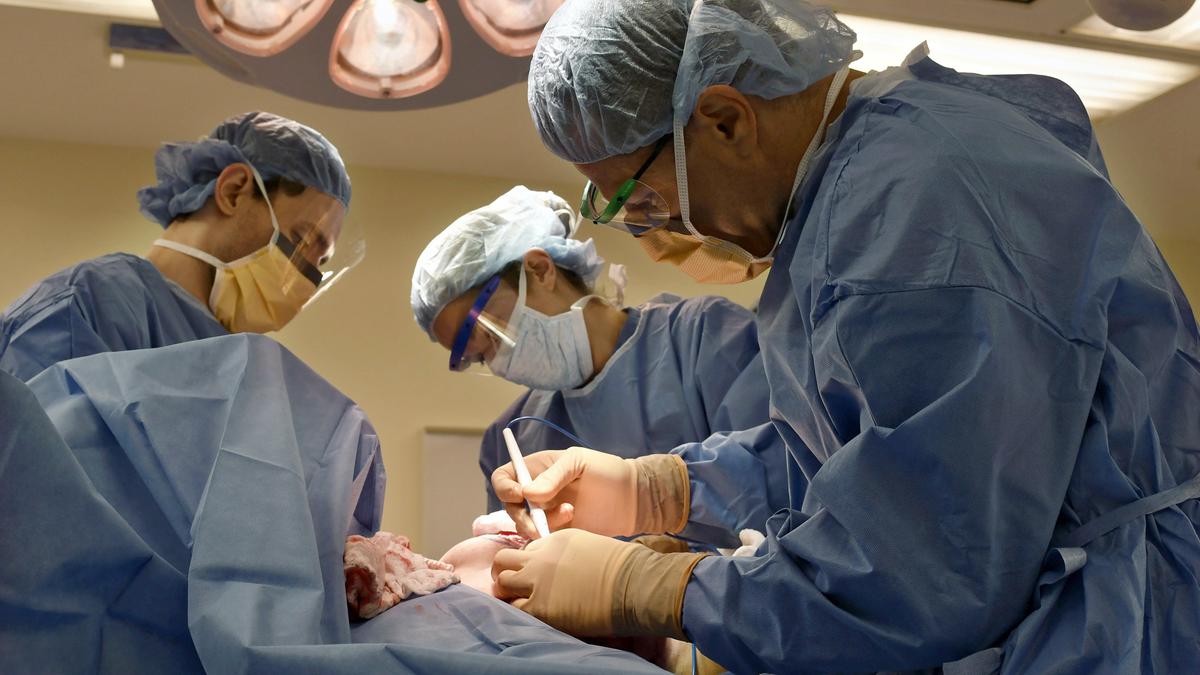
One-year-old Omani child undergoes Robot-Assisted Surgery for renal blockage in Bengaluru
The Hindu
The Right Pelvic Ureteric Junction Obstruction (UPJ) - where the right ureter (the tube that carries urine from the kidney to the bladder) meets the renal pelvis (a large cavity that collects urine as it is produced) - led to complications posing a risk to his life. The child was admitted to Fortis Hospital on Bannerghatta road with pain, infection and other complications.
A one-year-old male child from Oman, who had a renal blockage, got a new lease of life following a robot-assisted surgery at a private hospital in the city.
The Right Pelvic Ureteric Junction Obstruction (UPJ) - where the right ureter (the tube that carries urine from the kidney to the bladder) meets the renal pelvis (a large cavity that collects urine as it is produced) - led to complications posing a risk to his life. The child was admitted to Fortis Hospital on Bannerghatta road with pain, infection and other complications.
On examination, it was revealed that his right kidney was larger than normal and only 24% of the kidney was functional. Additionally, there was a significant build-up of urine in the right kidney as a result of an obstruction at the point where the renal pelvis connects to the ureter. If left untreated UPJ can lead to deterioration of kidney function, said doctors.
Evaluating the situation, a team of doctors led by Mohan Keshavamurthy, Senior Director - Urology, Andrology, Transplant, and Robotic Surgery at the hospital performed a robot- assisted laparoscopic pyeloplasty along with ureteral stenting (also known as double J stent). This is the first reported case in the field of robot-assisted surgeries in a child as young as one-year, the hospital claimed.
“The complexities of operating on a one-year-old are many with the organs being tiny, fragile and there is minimal space to access the abdomen. The robotic surgical instruments used are of the same size as those used for adults, whereas the organs are much smaller in size,” said Dr. Keshavamurthy.
“Besides this, the rigorous anaesthesia protocol in children makes the procedure much more complex. Thus, the remarkable benefits of the DaVinci XI system, such as superior magnification, manual dexterity, and precision in a confined space significantly improved the surgical outcome,” he said.
Elaborating on the procedure Sreeharsha Harinatha, Additional Director - Urology, Andrology, Transplant, and Robotic Surgery at the hospital said, the robot-assisted laparoscopic pyeloplasty helped in clearing the obstruction via minimal invasion, thereby allowing the urine to flow freely.













